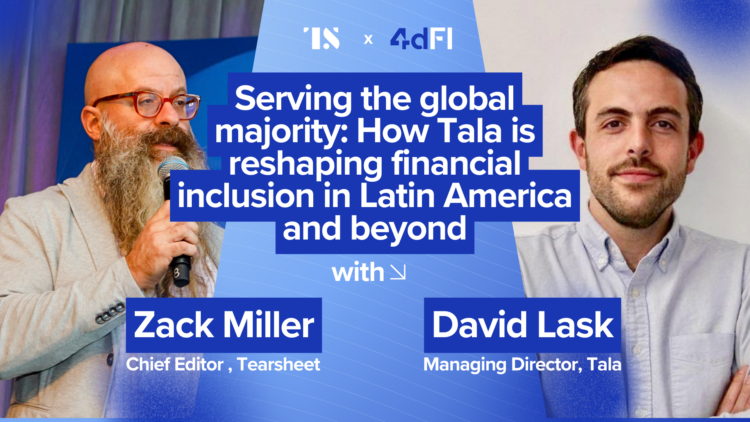Serving the global majority: How Tala is reshaping financial inclusion in Latin America and beyond with David Lask
- In cash-dominant Latin American markets, Tala is pioneering fintech solutions for previously overlooked consumers.
- David Lask shares how their recent funding will advance financial inclusion and discusses the region's evolving fintech landscape.

In a world where financial inclusion remains one of our generation’s greatest challenges, emerging markets are becoming the true laboratories of fintech innovation. While developed economies iterate on convenience, companies operating in regions with limited banking infrastructure are fundamentally reimagining what financial services can look like from the ground up.
Today, we’re diving into this fascinating intersection of opportunity and impact with David Lask from Tala. Tala has built a reputation as a pioneer in financial inclusion, providing access to credit and financial services to underbanked populations across multiple continents.
David joins us fresh from the Fintech Americas Miami conference to share his insights on the rapidly evolving Latin American fintech landscape. We’ll explore how the unique challenges and opportunities in this region are fostering innovative approaches to financial services, with a special focus on Mexico as a compelling case study of fintech evolution.
Listen to the full episode
Subscribe: Apple Podcasts I SoundCloud I Spotify
Watch the full episode
4 big ideas on Latin American fintech from David Lask of Tala
1. Serving the “global majority” through financial inclusion The term “global majority” reflects the reality that over 4 billion people worldwide lack adequate access to financial services. Tala addresses this challenge by providing short-term loans designed to help people manage financial volatility in their daily lives, serving as an entry point to the broader financial system.
“Tala was founded in 2014… with this mission of expanding the access of financial services for what we call the global majority, which over 4 billion people around the world that suffer from not enough access to financial products that they need to be able to have a healthier financial life on a day to day basis.”
2. Latin American fintech market consolidation The fintech landscape in Latin America is entering a consolidation phase where established players with product-market fit are growing rapidly while others exit. While the total number of deals has decreased, the size of individual investments has grown significantly, indicating investor confidence in proven business models.
“Latin America is clearly in a consolidating path in the fintech space… the deal sizes have been much, much bigger, around 73% much bigger. And I think that’s evidence that we’re seeing a growth, but for the companies that are steady and they’re being able to progress and grow in each one of these markets.”
3. Overcoming trust barriers through technology and education In cash-dominant economies like Mexico, where over 90% of transactions are cash-based, the dual challenge is building digital financial infrastructure while simultaneously fostering trust in financial institutions. Financial literacy remains a crucial component requiring collaboration among multiple stakeholders.
“Mexico is a cash-based economy. Over 90% of transactions are done in cash… The challenge continues to be how to integrate a large portion of the population into these digital channels and the trust that they have with financial institutions that has always been historically quite low. How can technology allow for people to trust the products that they receive and use them in a more healthier way?”
4. Evolving regulatory landscape As fintech solutions continue to develop in Latin America, regulators are working to keep pace with innovations while balancing consumer protection and market growth. Mexican regulators in particular have maintained close relationships with industry players to better understand emerging technologies and their implications.
“Regulators have continuously stayed very close to the market. They are open to collaborate with institutions like Tala and other players in order to gain that understanding… Mexico, particularly, has done a great job in being able to stay close to the players that are actually developing and executing this technology in order to be on the same page on what direction to drive towards.”








